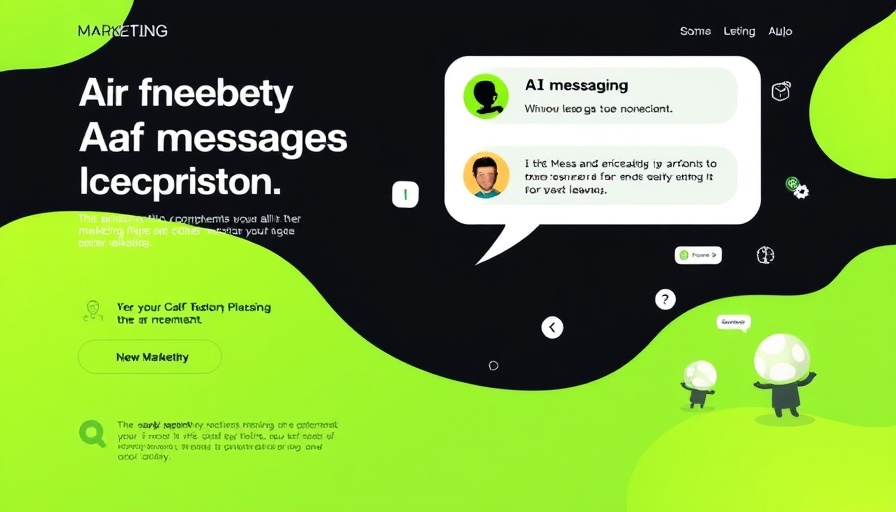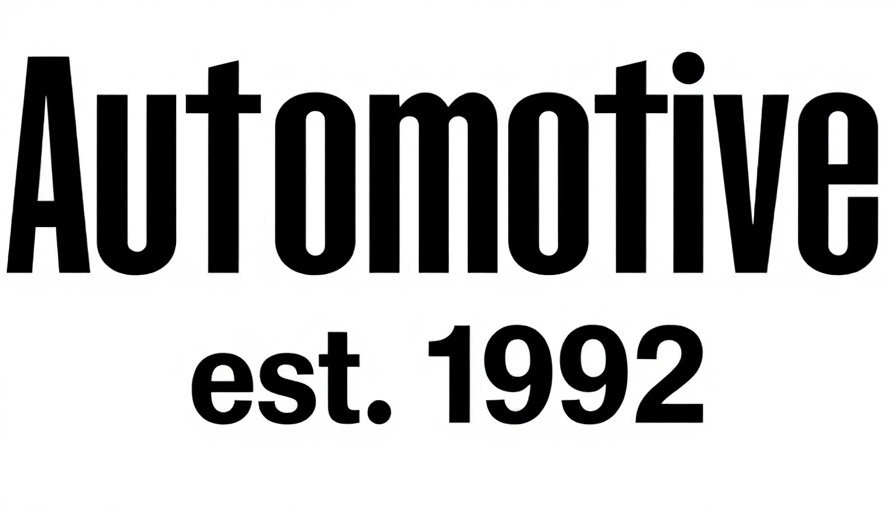
The AI Messaging Shift: Navigating New Expectations in SaaS
In the rapidly evolving landscape of Software as a Service (SaaS), a profound transformation in messaging is underway. As AI technology becomes deeply integrated into many businesses, how companies communicate their value has shifted dramatically. As of 2025, AI is not just a buzzword; it has become a cornerstone of expected functionality rather than a competitive edge. This evolution necessitates a strategic reevaluation of how SaaS companies present themselves to stay relevant and impactful.
Understanding the Saturation of AI Messaging
As we moved through 2023, the influx of companies labeling their products as 'AI-powered' became overwhelming. The sheer volume of AI branding led to a desensitization among consumers and investors alike. Venture capitalists responded by funneling resources primarily into AI startups, reinforcing a cycle where AI became synonymous with innovation. However, by 2025, this create a paradox: with everyone claiming to utilize AI, original value propositions began to blur. Describing your product as AI-enhanced began to feel like stating it was ‘internet-connected’ during the early 2000s—it was no longer a standout feature.
New Strategies for Differentiation
In this context, several SaaS companies are rethinking how they present AI in their messaging. Recent tests by brands like Notion reveal that placing AI in sub-headers, rather than as a focal point in hero headlines, yields better engagement. This shift in emphasis helps anchor the conversation on their core value propositions, signaling to consumers that AI is an ancillary support rather than the main feature. For example, the company Freshworks has begun employing a 3-step framework for positioning its AI capabilities, focused on addressing customer pain points effectively:
- Identify the Pain: Companies must first articulate the specific challenges their potential customers face. Instead of leading with technology, services must appeal to the underlying issues that necessitate a solution.
- Highlight the Outcome: Once the pain is identified, it’s essential to showcase how the product delivers tangible improvements—for instance, how users can reclaim valuable time that can be redirected towards critical tasks.
- Explain the Role of AI: Once customers understand the benefits, companies can transparently illustrate how AI facilitates these improvements through practical application, avoiding vague jargon.
This approach enhances clarity and relevance to customers' needs, ultimately improving engagement and trust.
Anticipating Future Trends in SaaS Messaging
As we look ahead, the trend away from overtly focusing on AI in messaging will likely continue. Brands must prioritize authentic communication of their unique value propositions, as technical features become commoditized. This shift could also inspire further creativity in how brands communicate technological advancements. With customers becoming savvier, the emphasis should lie in storytelling—connecting emotionally through real-world applications of AI rather than the technology itself.
Implications for the Automotive Industry
This messaging evolution in SaaS can serve as an insightful parallel for the automotive sector, particularly in dealership management strategies. Just like in SaaS, dealerships introducing 'AI features' should prioritize clear communication of the problems these features solve for customers and the improvements they deliver. This could reshape how dealerships market their services, potentially fostering closer connections with customers and enhancing satisfaction.
For professionals in the automotive sales training realm, understanding these trends can better prepare them to position their offerings and reassure clients of their value without being too reliant on jargon. As the industry progresses, embracing a narrative-driven approach might be key to securing long-lasting client relationships.
In conclusion, as AI becomes a standard expectation, the SaaS industry is pivoting toward messaging strategies that embrace clarity and practical outcomes. By focusing on customer pain points and delivering substantial value, companies ensure that they remain relevant and impactful in a crowded marketplace.
 Add Row
Add Row  Add
Add 

 Add Row
Add Row  Add Element
Add Element 




Write A Comment